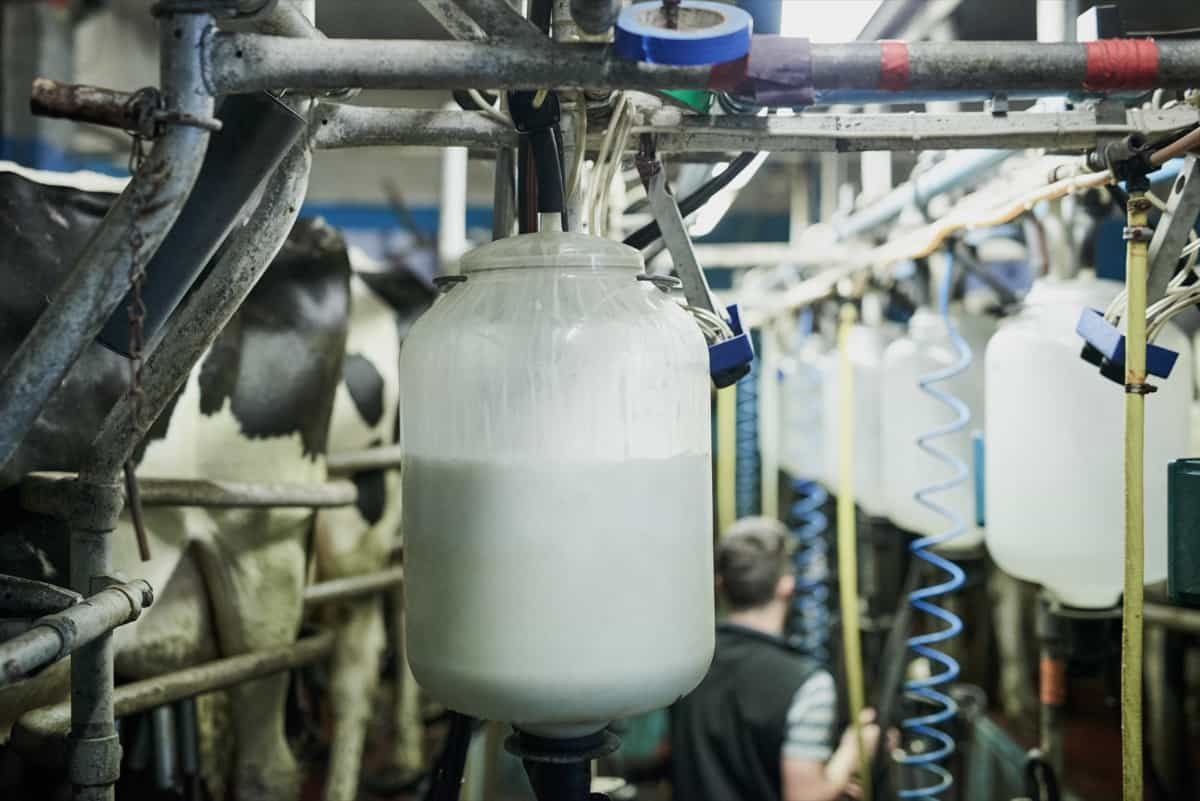Starting a milk chilling plant business involves comprehensive planning and understanding of the dairy industry. From analyzing market demands to setting up the right infrastructure, this venture requires strategic execution at every step.

How to Start a Milk Chilling Plant Business
Understand the Dairy Industry
Starting a milk chilling plant business requires a comprehensive understanding of the dairy industry, including the processes involved in collecting, chilling, and distributing milk. This industry is pivotal in the agricultural economy, and a milk chilling facility serves as a critical component of the supply chain, guaranteeing the proper preservation of milk temperature before it proceeds to processing facilities.
Comprehending the intricacies of the dairy sector necessitates grasping the seasonal shifts in milk production, the diverse milk quality, and their impacts on supply and demand equilibrium. It’s important to understand the role of dairy cooperatives, the expectations of dairy farmers, and the standards set by the industry for milk quality and hygiene.
Market Research and Analysis for Milk Chilling Plant Business
Market Research and Analysis for a Milk Chilling Plant Business involves a comprehensive study of the dairy industry, consumer preferences, and competition. Key factors include understanding the regional demand for chilled milk, assessing the supply chain efficiency, and evaluating local dairy farming practices. Profit margins in this sector can vary significantly based on factors like operational efficiency, scale of operation, and market positioning. Generally, profit margins for milk chilling plants range from 10% to 20%.
However, these figures can be higher in regions with a strong demand for high-quality, chilled milk and where the business can leverage advanced technologies for cost-effective operations and storage. This analysis helps in identifying potential market opportunities, understanding customer needs, and developing strategies to create a competitive edge in the market.
Legal and Regulatory Requirements for Milk Chilling Plant Business
This involves obtaining various licenses and permits from local and national authorities, adhering to food safety and quality standards, and ensuring compliance with environmental regulations. It’s important to understand the specific regulations that apply to dairy processing and chilling plants, including those related to waste management, energy consumption, and hygiene standards. Additionally, you should be aware of the labor laws and regulations regarding employee safety and welfare.
Develop a Business Plan for a Milk Chilling Plant
Developing a comprehensive business plan is a cornerstone for anyone looking to start a milk-chilling plant business. This plan should cover every aspect of the business, from market analysis and business model to operational strategies and financial projections. The plan should detail the scale of operations, whether you’re considering a 1000 ltr or a 5000 ltr milk processing plant, and the associated costs for each.
In case you missed it: How to Start Coconut Shell Charcoal Business: Business Plan for Maximizing Profits

It should also outline the marketing strategies to attract customers, operational plans for milk collection, chilling, and distribution, and the management structure of the business. A thorough business plan is not just a roadmap for the entrepreneur; it’s also a necessary document for securing financing from banks or investors.
Finance and Funds Options for Milk Chilling Plant Business
Securing finance is a crucial aspect of starting a milk-chilling plant business. There are various funding options available, including bank loans, government subsidies, and venture capital. When seeking finance, it’s important to have a solid business plan that demonstrates the viability and profitability of the business.
Banks and financial institutions often require detailed project reports, including the estimated cost of setting up the plant, which can vary significantly based on the capacity, for example, the difference in 1000 ltr milk processing plant cost and 5000 ltr milk processing plant cost. Government subsidies can be a great option as they often offer favorable terms for agribusiness ventures. Additionally, exploring venture capital or angel investors can be a viable option, especially if the business model is innovative and has high growth potential.
Location Selection and Infrastructure Setup for Milk Chilling Plant
The location should be strategically chosen to ensure ease of milk collection from dairy farms and accessibility to markets. It should also have the necessary infrastructure, such as reliable power supply, water availability, and good connectivity to major roads. The design and setup of the plant should adhere to industry standards, with efficient chilling and storage facilities to maintain the quality of milk.
This includes investing in high-quality chilling tanks, refrigeration systems, and backup power supplies to prevent spoilage. The size of the plant should be based on the market analysis; for instance, a 1000 ltr plant might suffice for a small-scale operation, while a 5000 ltr plant would be necessary for larger operations. Additionally, considering the environmental impact and incorporating sustainable practices in the infrastructure design can be beneficial in the long run.
Procurement of Equipment and Machinery for Milk Chilling Plant
Procuring the right equipment and machinery is a critical step in setting up a milk-chilling plant. The key pieces of equipment include bulk milk chillers, pasteurizers, homogenizers, and packaging machines. The choice of equipment depends on various factors, such as the capacity of the plant, the level of automation desired, and budget constraints. For instance, the requirements for a 1000 ltr milk processing plant would be different from those of a 5000 ltr milk processing plant in terms of size and throughput capacities of the machinery.
In case you missed it: Dairy Farm Income Per Month in India: For 10, 20, 30, 40, 50, 60, 70, 80, 90, and 100 Buffaloes

It’s important to choose equipment that is energy-efficient, easy to maintain, and compliant with industry standards. It is also wise to source machinery from reputable manufacturers who provide reliable after-sales service and parts. Additionally, considering the installation costs and the lead time for delivery and setup is crucial for project planning.
Quality Control and Safety Measures in Milk Chilling Plant Operations
Implementing stringent quality control and safety measures is essential in the operation of a milk chilling plant. Quality control begins with ensuring the quality of raw milk received, which involves testing for adulteration, bacterial count, and fat content. During the chilling process, it’s important to monitor and control the temperature to prevent bacterial growth and maintain the quality of the milk.
The plant should adhere to food safety standards and regulations, such as the Hazard Analysis and Critical Control Points (HACCP) system, to ensure that the milk is safe for consumption. Regular maintenance of equipment, thorough cleaning and sanitization protocols, and staff training in hygienic practices are crucial.
Market and Distribution Strategies for Milk Chilling Plant Products
Developing effective market and distribution strategies is vital for the success of a milk chilling plant. Understanding your target market, whether it be local retailers, dairy product manufacturers, or direct consumers, is essential in tailoring your marketing efforts. Establishing strong relationships with dairy farmers and cooperatives can ensure a steady supply of raw milk, which is a key factor in the consistent production of quality products.
Effective branding and marketing can differentiate your products in a competitive market. This includes branding your milk as fresh, high-quality, or locally sourced, depending on what resonates with your target audience. Distribution strategies should focus on ensuring that the milk reaches the customers quickly and efficiently, maintaining its freshness and quality. This could involve investing in a reliable fleet of refrigerated transport or partnering with established distribution networks.
In case you missed it: 9 Value-added Business Ideas for Pig Farmers: Low-investment and Highly Profitable

Conclusion
Establishing a successful milk chilling plant business is a multifaceted endeavor that demands attention to market needs, quality control, and effective distribution strategies. With the right approach and dedication, it can become a profitable and sustainable venture in the dairy industry.
- Handicraft Making at Home: A Small Profitable Business Idea
- Pet-Tech Startups: Innovations for Animal Lovers
- Tech Repair Services: Meeting the Demand for Gadget Maintenance
- Maximizing Rewards: Smart Credit Card Habits for Cashback and Points
- Ultimate Guide to Making Money from Goat Milk Business
- How to Start an Agricultural Value Added Product Business
- Value-Added Business Ideas for Greenhouse: The Best Ways to Make Profits with Greenhouse Farming
- How to Make Profits with Organic Country Chicken: Best Strategies for Beginners
- 10 Value-added Business Ideas for Millets: Low-investment and Highly Profitable